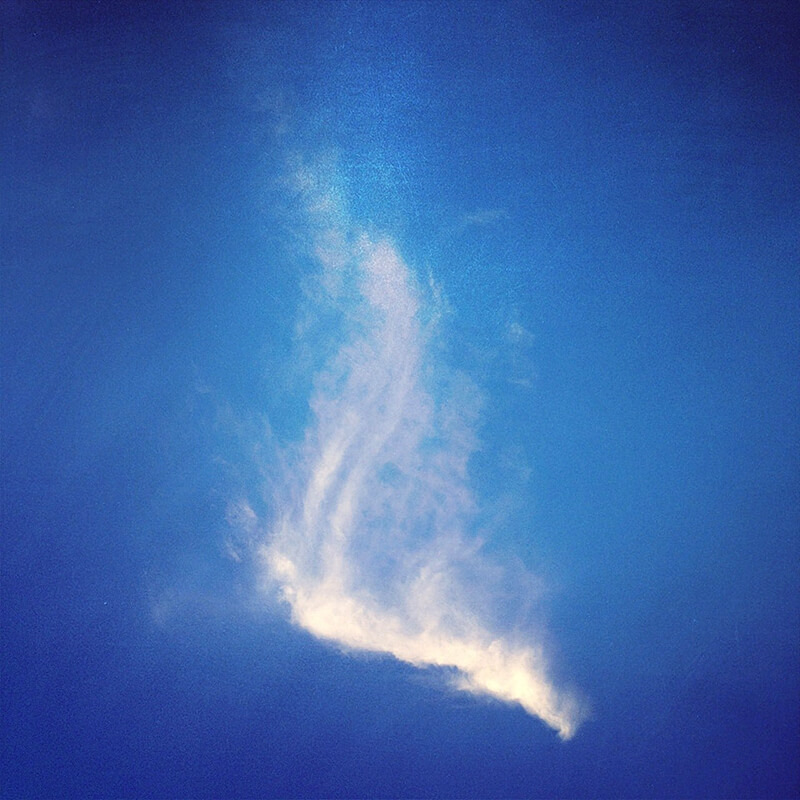October 1, 2020
A better understanding of how cirrus clouds form

New research from a team led by scientists at Purdue University has found that trees and plants play an important role in the formation of cirrus clouds, a finding that has implications for agriculture, urban development, and climate change modeling. (Photo by J. Duclos via Unsplash.com)
WEST LAFAYETTE, Ind. — New research provides insights into how cirrus clouds form, with implications for agriculture, urban development and climate-change predictions. The study shows that trees and plants play an important role that affects precipitation and global climate change.
An international team combined theory, field measurements and lab experiments to develop a better understanding of the formation of clouds.
Daniel Cziczo, (pronounced SIT-so) professor and head of Purdue University's Department of Earth, Atmospheric, and Planetary Sciences, said that, surprisingly, scientists didn't previously have a full understanding of how cirrus clouds form.
"These clouds have an effect on climate and precipitation — things we humans care deeply about," he said. "This paper tells us how particles in the atmosphere, whether from natural or human-made sources, can impact clouds in a way that we previously didn't understand."
Scientists knew that particles in the air from smoke and auto emissions would influence the creation of clouds, but this new research spotlights the importance of volatile emissions from plants and organic material, which the scientists call "secondary organic aerosols."
"This data will help us better predict how activities such as deforestation or reforestation will affect the world's climate, because these secondary organic aerosols are derived from plants," Cziczo said. "If the levels of these organic aerosols change, we'll now have a better understanding of what effects this will have and be able to use this information in global climate models."
Cziczo and the other authors of the paper were able to take data supplied by other researchers on the project and use it to create cirrus-like ice clouds in his Purdue laboratory, and then analyze the results using a specialized spectrometry instrument.
The research was published in Nature Communications.
"Everybody's heard of greenhouse gases and global warming, but I don't think many understand that clouds are a big player in climate change, too," Cziczo said. "The clouds also affect precipitation, which has an obviously large role in agriculture and human activities.
The cloud-formation mechanism described in the journal paper highlights the intricate interplay between human activities, the environment, and natural resources, such as rainfall.
"If our water resources change dramatically, that has huge consequences on our food production, land and resource utilization, things like that. So, we're really trying to understand both the water cycle and climate from the perspective of the atmosphere."
The science of clouds extends beyond what we see in the sky above us, Cziczo said, and the same chemistry and physics are at work in clouds on other planets.
"It does snow on Mars, and Mars has clouds. We've used some of our laboratory equipment that we use to understand clouds on Earth and adapted them to Martian conditions or conditions on Saturn’s moon Titan using data from probes."
About Purdue University
Purdue University is a top public research institution developing practical solutions to today’s toughest challenges. Ranked the No. 5 Most Innovative University in the United States by U.S. News & World Report, Purdue delivers world-changing research and out-of-this-world discovery. Committed to hands-on and online, real-world learning, Purdue offers a transformative education to all. Committed to affordability and accessibility, Purdue has frozen tuition and most fees at 2012-13 levels, enabling more students than ever to graduate debt-free. See how Purdue never stops in the persistent pursuit of the next giant leap at https://purdue.edu/
Writer, Media contact: Steve Tally, steve@purdue.edu, @sciencewriter
Source: Daniel Cziczo, djcziczo@purdue.edu
Journalists visiting campus: Journalists should follow Protect Purdue protocols and the following guidelines:
- Campus is open, but the number of people in spaces may be limited. We will be as accommodating as possible, but you may be asked to step out or report from another location.
- To enable access, particularly to campus buildings, we recommend you contact the Purdue News Service media contact listed on the release to let them know the nature of the visit and where you will be visiting. A News Service representative can facilitate safe access and may escort you on campus.
- Correctly wear face masks inside any campus building, and correctly wear face masks outdoors when social distancing of at least six feet is not possible.
ABSTRACT
A Biogenic Secondary Organic Aerosol Source of Cirrus Ice Nucleating Particles
Martin J. Wolf, Yue Zhang, Maria A. Zawadowicz, Megan Goodell, Karl Froyd, Evelyn Freney, Karine Sellegri, Michael Rösch, Tianqu Cui, Margaux Winter, Larissa Lacher, Duncan Axisa, Paul J. DeMott, Ezra J.T. Levin, Ellen Gute, Jonathan Abbatt, Abigail Koss, Jesse H. Kroll, Jason D. Surratt, and Daniel J. Cziczo
DOI: 10.1038/s41467-020-18424-6
Ice nucleating particles (INPs) influence global climate by altering cloud properties. Here, we demonstrate the potential for biogenic SOA to activate as depositional INPs in the upper troposphere by combining field measurements with laboratory experiments. Ambient INPs were measured in a remote mountaintop location at –46 ˚C and an ice supersaturation of 30% with concentrations ranging from 0.1 to 70 L–1. Concentrations of depositional INPs were positively correlated with the mass fractions and loadings of isoprene-derived secondary organic aerosols. Compositional analysis of ice residuals showed that ambient particles with isoprene-derived SOA material can act as depositional ice nuclei. Laboratory experiments further demonstrated the ability of isoprene-derived SOA to nucleate ice under a range of atmospheric conditions. We further show that ambient concentrations of isoprene-derived SOA can be competitive with other INP sources. This demonstrates that isoprene and potentially other biogenically-derived SOA materials could influence cirrus formation and properties.
Note to journalists: Journalists visiting campus should follow visitor health guidelines.

